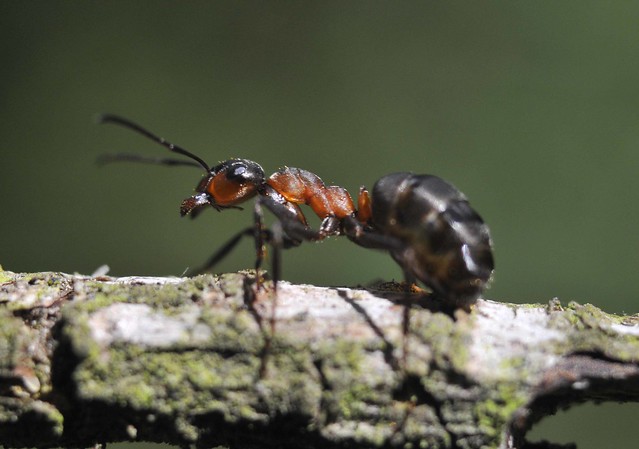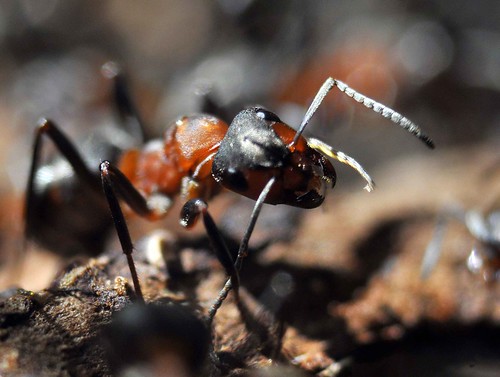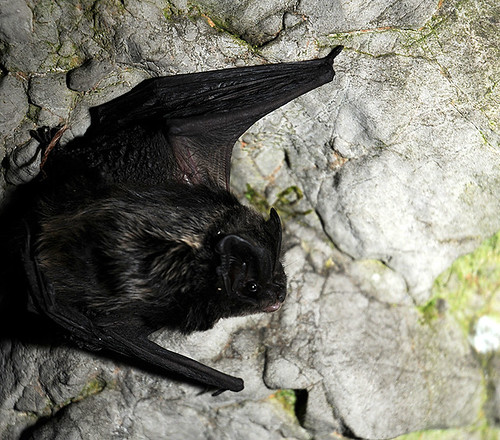I’ve always loved anything
miniature and small. As a child, I loved
reading The Borrowers by Mary
Norton. I was intrigued by Arrietty, the
young daughter of a family of Borrowers, tiny people who lived under the
floor. When they emigrated in The Borrowers Afield I loved exploring
the great outdoors through her eyes, discovering giant grass and hedges to
climb, beautiful flowers, giant buzzing bees, mice and frogs. And so began my love of nature. I used to imagine my miniature self, running
barefoot across the moss in my garden.
This glossy green carpet is perhaps one of the most ancient of plants, having
no roots or stems, nor true leaves. Many
varieties of moss thrive in the ancient woodland of the British Isles. It grows over rocks and soil, tree bark and stone
walls.
Lichens also grow on the bark of
trees, and are similar in that they have no roots, and absorb water all over
their surface. They need moist humid air
within which to grow, and the best place to spot them is in damp ancient
woodland. Because they absorb water from
the air around them, many varieties of lichens cannot survive near motorways or
human habitation due to the pollutants in the air, such as sulphur dioxide and
carbon monoxide, which dissolve in the water in the air that they drink. In these areas only Pleurococcus, a microscopic alga that turns tree trunks a dirty
green colour, seem able to survive. In
ancient woodland you see a much more varied and exciting variety of lichens,
including Tree Lungwort (Lobaria
pulmonaria), one of the largest lichens with large light green leaf shapes
growing over tree trunks, whose presence is often an indicator of ancient
woodland.
Ancient woodland is rare in that
it has undisturbed, and very rich soil.
It has not been ploughed or turned over by man for centuries, if at
all. It often dates back to the last Ice
Age, and in deciduous woodland, has been fed every year with the falling leaves
in autumn. Deciduous trees also enable
the prolific growth of another key ancient woodland indicator species – the English
Bluebell (Hyacinthoides non-scripta). They flower and leaf early in the growing
season, making the most of the available light before the tree canopy closes in
late spring, giving a beautiful carpet of colour so typical of British woodland,
and much loved pollen and nectar for our humble Bumblebees.
Ferns are also well adapted to
woodland, these shade loving group of plants are one of my favourite. I love how each leaf gradually uncurls from
the centre, extending out into beautiful light green fronds, it’s like
unwrapping a present. Large ancient trees
in Britain harbour many beautiful little rare treasures, like the Golden
Hoverfly (Callicera spinolae), large
furry hoverflies that more closely resemble a honeybee, except that they have
long black antennae that are white at the tips.
The adults are active in September and October, often feeding on nectar
rich ivy as it is one plant which offers nectar and pollen at this time of the
year. Golden Hoverfly tend to lay their
eggs in ancient trees that have been pollarded, where wet rot holes have often
formed, or in the snags and complex branch structures of these old trees.
Perhaps the most elegant and
beautiful creature of ancient woodland, is the Purple Emperor Butterfly (Apatura iris). This Butterfly can appear black and white
from some angles, but when the sunlight strikes the wings at just the right
angle, a magnificent purple sheen is revealed.
This Butterfly spends most of its time up in the tree canopy feeding on
aphid honeydew, although it’s rather unusual diet does bring it down in the
early morning and again in the late afternoon, when it will feed on animal
droppings, carrion, moisture from damp mud, and have even happily landed on
human observers to feed on their sweat!
Another beautiful butterfly is
the Silver-washed Fritillary (Argynnis
paphia), a bright orange butterfly named after the silver streaks found
underneath its wings. This Fritillary is
most often found in woodland where it’s larval food plant, the Common
Dog-violet (Viola riviniana),
grows. As adults, they feed on aphid
honeydew in the woodland canopy, but also their favourite nectar sources, the
flowers of Bramble and Thistle. The Silver-washed Fritillary is a strong
flyer, hurtling along through the tree canopy searching for anything that might
be food, and investigating anything remotely orange coloured in case it might
be a potential mate. Their courtship
flight is the most spectacular of all though, with the paler orange female
flying in a straight line, whilst the male continuously flies in loops all
around her, before eventually landing on a convenient spot where the male
showers her in scent scales. How
romantic!
Important managers of ancient
woodland are the rare and often overlooked are the Narrow Headed Ants (Formica
exsecta), recognised by a deep notch at the back of their head. Even though they are only 10mm long, they
play an important role in helping to regenerate forests. Certain plants are dependent on ants for
distribution of their seeds. For
example, Small Cow Wheat (Melampyrum
sylvaticum), produces seeds with a small sweet attachment which attracts
the ants. The ants carry the seeds to
their nest, where they will consume the yummy food, before taking the seeds out
of the nest and disposing of them somewhere new where they will germinate into new
plants the following year. Ants must
have a sweet tooth too!
Narrow Headed Ants are also
surprisingly green in their way of living. Masters of eco architecture, they build large
dome-shaped nests around a tussock of grass or some similar plant, which
provides not only the foundation of the nest, but also heat as the vegetation
decays within their nest. They also
build their nests asymmetrically, with the larger and flatter side facing
south, so as to get the maximum heat from the sun on their nests. The worker ants also go out sunbathing, before
returning to the nest and using their now heated bodies to warm and help
incubate the eggs. They also thatch
their roof with a covering of grass, heather and pine needles, insulating their
home from the cold. I guess when you’ve
gone to so much trouble to make your home so nice, you can understand how wood
ants can be very territorial, and Narrow Headed Ants are no exception. They have been known to climb onto the backs
of other ant species, and decapitate them from behind, literally biting their
heads off! Perhaps they’ve watched one
too many zombie movies?
If you’re looking for more scary
creatures of the forest, there are a couple of rare bats, the Barbastelle Bat (Barbastella barbastellus) and Bechstein’s
Bat (Myotis bechsteinii). I think the Barbastelle Bat is probably the
scarier looking of the two, being mostly black and pictured here in caves. It’s kind of ironic to think that humans used
to live in caves, and these days most of us tend to have a fear of Bats
flapping around us, how did we ever manage to live in caves with them? Surely we must have come across them in the
past, or is that where our fear of them first came from? Did we inadvertently spook them with a noise,
or was it just their time to fly out, and we happened to be in the way when
they went?
Apparently, Bats roost in
different locations at different times, depending on whether they just want
somewhere to sleep for the day, a breeding roost, or a hibernation roost. For breeding, they prefer higher treetops,
just under the canopy, where the sun will keep the females and their babies warm. Non-breeding adult females, and males, prefer
hollows and damaged spots in older or dead trees to keep cool in for sleeping
during the day. But in winter, they need
somewhere cooler, to allow their body temperatures to drop, preferably quiet
where they won’t be disturbed, and somewhere with a consistent
temperature. Perhaps in the base of an
old tree, but Bats would also find caves ideal for this. Perhaps they would hibernate deep in caves,
whereas prehistoric man would be nearer a cave’s entrance making small fires to
keep warm. Then come springtime, a whole
swarm of Bats could come flying out, surprising and terrifying humans, who
would have had no idea they were there!
I think the cutest creature of
the UK’s forests has to be the Dormouse (Muscardinus
avellanarius), a quick search on GoogleImages brings up many gorgeous pictures to melt your heart. Dormice are so sweet, with tiny human-like
hands, cute faces, golden brown fur, and a fluffy tail. They spend most of their time sleeping, they
sleep all day long, and hibernate up to seven months a year. They wake up in April, and spend their
nocturnal lives searching for food amongst the branches in the trees, often
taking long detours and leaping from branch to branch rather than having to
risk the danger of predators on the ground.
They tend to feed on flowers and pollen in the spring, fruit during the
summer, and nuts in the autumn. Their
favourite food is hazelnuts and bramble, whose flowers and berries can sustain
them for quite some time, but they can also eat aphids and caterpillars. The trees really do hold all they need, even
giving them nesting material, and hollows within which to build their nests
close to the ground for winter hibernation.
Over recent years, Dormice are in
decline. Because of their specialised
diet, and because of their fear of crossing open ground, dormice are restricted
to ancient woodland sites, they cannot cross open ground to colonise other
sites when their woodland habitat is destroyed.
All the species I have mentioned today are especially adapted to ancient
woodland, many are rare and threatened.
Amazingly, only 2% of the British Isles is covered in ancient woodland,
and only half of it is in a semi-natural condition. The other half has been planted with exotic
and invasive species, such as conifers and rhododendron, spoiling the biodiversity
and making it difficult or impossible for our native species to survive
there. These woodlands need careful
management, with the maintenance of native species of flora and fauna, to bring
the woods back to what was originally here in these woodlands. We cannot bring back the species that are
already extinct, but we can use what we’ve learned to protect the threatened
species barely hanging on to our British countryside.
The National Planning Policy
Framework (NPPF) is meant to protect special sites like these, to protect the ancient
forests of Britain and its inhabitants from extinction. But their wording has provided a huge
loophole allowing any potential developers to bulldoze straight through the
land. This is what it says:
“Planning
permission should be refused for development resulting in the loss or
deterioration of irreplaceable habitats, including
ancient woodland and the loss of aged or veteran trees found outside
ancient woodland, unless the need for, and benefits of, the development in that
location clearly outweigh the loss.”
How can any benefit of
development outweigh the loss of such a beautiful habitat and the amazing
species within it, which could be lost forever?
The Woodland Trust believe this wording is as much use as a
chocolate teapot. The wording should be
changed to ancient woodland loss being “wholly
exceptional.” The UK government disagrees,
they believe there is adequate protection, despite there being absolutely no
evidence to back that claim up. What do
you believe? Do you want to protect our
amazing and precious species?
As much use as a Chocolate Teapot Youtube video
Photo Credits: Image
1 & 4 – WT/ML (Woodland Trust Media Library), Image 2, 3, 5, 10 & 11 –
Getty Images, Image 6 & 8 – Nic Relton
(Flickr Creative Commons license), Image 7 – Jim Champion / Geograph
(Creative Commons license), Image 9 – Jan Svetlik (Flickr Creative Commons
license)







No comments:
Post a Comment